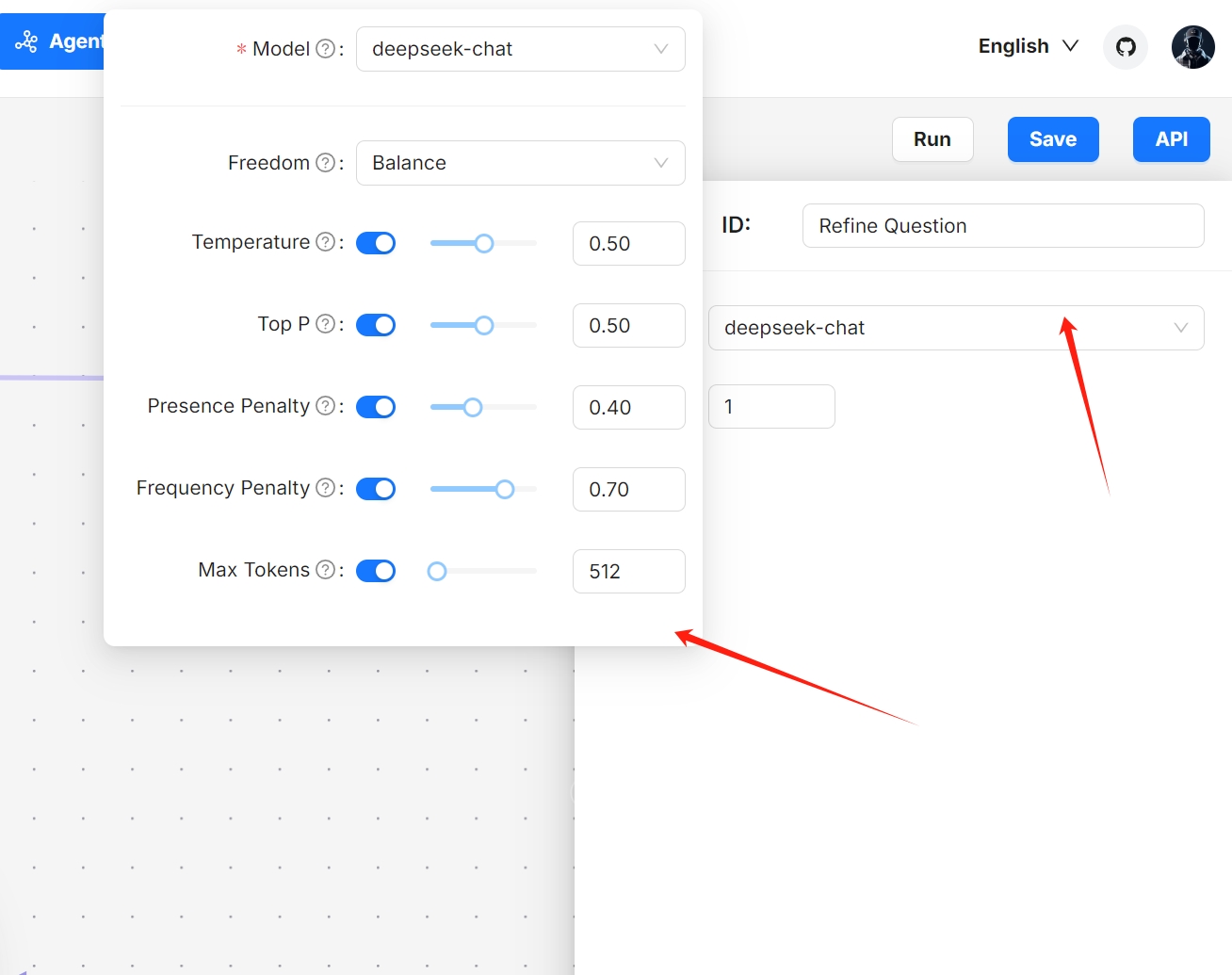mirror of
https://git.mirrors.martin98.com/https://github.com/infiniflow/ragflow.git
synced 2025-07-16 04:51:50 +08:00
105 lines
5.2 KiB
Markdown
105 lines
5.2 KiB
Markdown
---
|
||
sidebar_position: 2
|
||
slug: /general_purpose_chatbot
|
||
---
|
||
|
||
# Create chatbot
|
||
|
||
Create a general-purpose chatbot.
|
||
|
||
---
|
||
|
||
Chatbot is one of the most common AI scenarios. However, effectively understanding user queries and responding appropriately remains a challenge. RAGFlow's general-purpose chatbot agent is our attempt to tackle this longstanding issue.
|
||
|
||
This chatbot closely resembles the chatbot introduced in [Start an AI chat](../start_chat.md), but with a key difference - it introduces a reflective mechanism that allows it to improve the retrieval from the target knowledge bases by rewriting the user's query.
|
||
|
||
This document provides guides on creating such a chatbot using our chatbot template.
|
||
|
||
## Prerequisites
|
||
|
||
1. Ensure you have properly set the LLM to use. See the guides on [Configure your API key](../models/llm_api_key_setup.md) or [Deploy a local LLM](../models/deploy_local_llm.mdx) for more information.
|
||
2. Ensure you have a knowledge base configured and the corresponding files properly parsed. See the guide on [Configure a knowledge base](../dataset/configure_knowledge_base.md) for more information.
|
||
3. Make sure you have read the [Introduction to Agentic RAG](./agent_introduction.md).
|
||
|
||
## Create a chatbot agent from template
|
||
|
||
To create a general-purpose chatbot agent using our template:
|
||
|
||
1. Click the **Agent** tab in the middle top of the page to show the **Agent** page.
|
||
2. Click **+ Create agent** on the top right of the page to show the **agent template** page.
|
||
3. On the **agent template** page, hover over the card on **General-purpose chatbot** and click **Use this template**.
|
||
*You are now directed to the **no-code workflow editor** page.*
|
||
|
||

|
||
|
||
:::tip NOTE
|
||
RAGFlow's no-code editor spares you the trouble of coding, making agent development effortless.
|
||
:::
|
||
|
||
## Understand each component in the template
|
||
|
||
Here’s a breakdown of each component and its role and requirements in the chatbot template:
|
||
|
||
- **Begin**
|
||
- Function: Sets an opening greeting for users.
|
||
- Purpose: Establishes a welcoming atmosphere and prepares the user for interaction.
|
||
|
||
- **Interact**
|
||
- Function: Serves as the interface between human and the bot.
|
||
- Role: Acts as the downstream component of **Begin**.
|
||
|
||
- **Retrieval**
|
||
- Function: Retrieves information from specified knowledge base(s).
|
||
- Requirement: Must have `knowledgebases` set up to function.
|
||
|
||
- **Relevant**
|
||
- Function: Assesses the relevance of the retrieved information from the **Retrieval** component to the user query.
|
||
- Process:
|
||
- If relevant, it directs the data to the **Generate** component for final response generation.
|
||
- Otherwise, it triggers the **Rewrite** component to refine the user query and redo the retrival process.
|
||
|
||
- **Generate**
|
||
- Function: Prompts the LLM to generate responses based on the retrieved information.
|
||
- Note: The prompt settings allow you to control the way in which the LLM generates responses. Be sure to review the prompts and make necessary changes.
|
||
|
||
- **Rewrite**:
|
||
- Function: Refines a user query when no relevant information from the knowledge base is retrieved.
|
||
- Usage: Often used in conjunction with **Relevant** and **Retrieval** to create a reflective/feedback loop.
|
||
|
||
## Configure your chatbot agent
|
||
|
||
1. Click **Begin** to set an opening greeting:
|
||

|
||
|
||
2. Click **Retrieval** to select the right knowledge base(s) and make any necessary adjustments:
|
||

|
||
|
||
3. Click **Generate** to configure the LLM's summarization behavior:
|
||
3.1. Confirm the model.
|
||
3.2. Review the prompt settings. If there are variables, ensure they match the correct component IDs:
|
||

|
||
|
||
4. Click **Relevant** to review or change its settings:
|
||
*You may retain the current settings, but feel free to experiment with changes to understand how the agent operates.*
|
||

|
||
|
||
5. Click **Rewrite** to select a different model for query rewriting or update the maximum loop times for query rewriting:
|
||

|
||

|
||
|
||
:::danger NOTE
|
||
Increasing the maximum loop times may significantly extend the time required to receive the final response.
|
||
:::
|
||
|
||
1. Update your workflow where you see necessary.
|
||
|
||
2. Click to **Save** to apply your changes.
|
||
*Your agent appears as one of the agent cards on the **Agent** page.*
|
||
|
||
## Test your chatbot agent
|
||
|
||
1. Find your chatbot agent on the **Agent** page:
|
||

|
||
|
||
2. Experiment with your questions to verify if this chatbot functions as intended:
|
||
 |